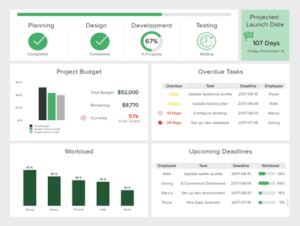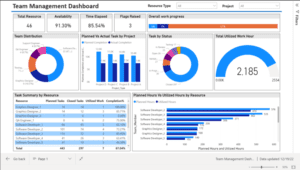Project Management: How Data Analytics is Morphing the Industry
/*Project Management: How Data Analytics is Morphing the Industry

80% of today’s Project Management tasks will be eliminated by 2030 (Gartner 2019), due to data analytics, which is one of the fastest growing industries across the globe. That is an alarming statistic for anyone in the project management field, but it doesn’t mean you’re going to lose your job. It means that the role of a project manager will start shifting into a more strategic position. So, how can you integrate data analytics into your daily processes in order to stay on top of this fast-moving trend?
First, think of one of the biggest challenges project managers face, managing the triple constraints. A report by McKinsey, a global management consulting company, uncovered that $66 billion U.S. dollars were “lost” across 5000 separate projects because they exceeded the time allocated for them due to poor planning and resources that were spent inefficiently (Misra 2021). Obtaining the pace of a project can now be done by artificial intelligence, so managers can see where the project is at and if it will be completed by the end date. They can see a burn-down chart that shows where work was or is being held up or accelerated in comparison to the project schedule. Risks play a large factor in the development of a project and can end up determining if it stays within the planned constraints. Using analytics, a project manager has access to real-time evaluation of risks, various courses of action, and how the constraints of the project would be affected. Deep and comprehensive analytics can also aid with better resource usage and cost and revenue forecasting. Organizations can use analytics to adopt a wider perspective and combine disparate data streams to provide in-depth insights into projections and early warning indications in complicated projects. Here is what a dashboard for a project may look like for a manager.

Another important aspect of project management is keeping all parties updated on the information they need in real-time. Data analytics, specifically digitization of your typical project phases, can be used to keep all stakeholders looking at the updated information they need to make decisions and view progress. Digitization also allows individual teams to see project specifics, while stakeholders look at the bigger picture. Below is just one example of a customized dashboard that a stakeholder might use to see high-level information on all projects.

Overall, data analytics can provide predictions managers would otherwise have to analyze themselves, so they can focus on next steps, making decisions to keep their projects on track, in-budget, and with the highest quality deliverables.
Want to learn more on how you can use data analytics as a project manager? Join our one-day training “Dashboard in a Day using PowerBi.” Learn more and register here.